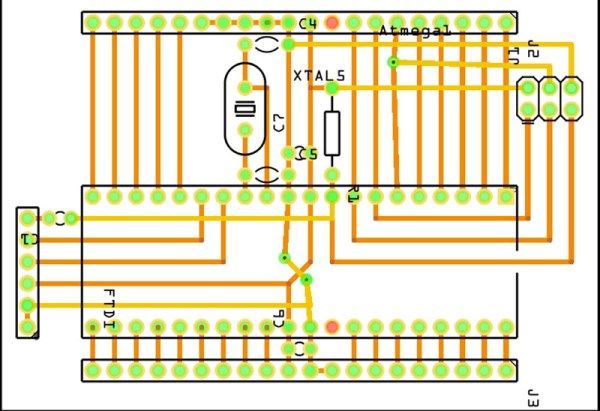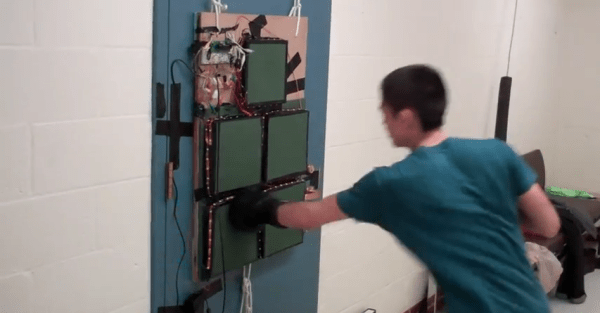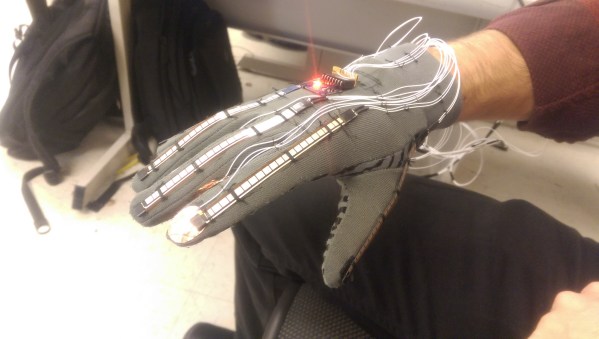While most people are moving onto ARMs and other high-spec microcontrollers, [Dave Cheney] is bucking the trend. Don’t worry, it’s for a good reason – he’s continuing work on one of those vintage CPU/microcontroller mashups that implement an entire vintage system in two chips.
While toying around with the project, he found the microcontroller he was using, the ATMega1284p, was actually pretty cool. It has eight times the RAM as the ever-popular 328p, and twice as much RAM as the ATMega2560p found in the Arduino Mega. With 128k of Flash, 4k of EEPROM, 32 IOs, and eight analog inputs, it really starts to look like the chip the Arduino should have been built around. Of course historical choices don’t matter, because [Dave] can just make his own 1284p prototyping board.
The board is laid out in Fritzing with just a few parts including a crystal, a few caps, an ISP connector, and pins for a serial connector. Not much, but that’s all you need for a prototyping board.
The bootloader is handled by [Maniacbug]’s Mighty 1284 Arduino Support Package. This only supports Arduino 1.0, not the newer 1.5 versions, but now [Dave] has a great little prototyping board that can be put together from perfboard and bare components in a few hours. It’s also a great tool to continue the development of [Dave]’s Apple I replica.














